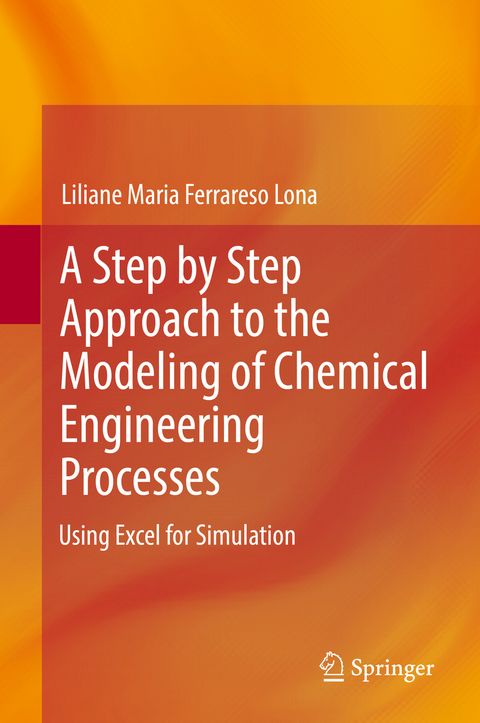
A Step by Step Approach to the Modeling of Chemical Engineering Processes
Springer International Publishing (Verlag)
978-3-319-66046-2 (ISBN)
This book treats modeling and simulation in a simple way, that builds on the existing knowledge and intuition of students. They will learn how to build a model and solve it using Excel.
Most chemical engineering students feel a shiver down the spine when they see a set of complex mathematical equations generated from the modeling of a chemical engineering system. This is because they usually do not understand how to achieve this mathematical model, or they do not know how to solve the equations system without spending a lot of time and effort.
Trying to understand how to generate a set of mathematical equations to represent a physical system (to model) and solve these equations (to simulate) is not a simple task. A model, most of the time, takes into account all phenomena studied during a Chemical Engineering course. In the same way, there is a multitude of numerical methods that can be used to solve the same set of equations generated from the modeling, and many different computational languages can be adopted to implement the numerical methods. As a consequence of this comprehensiveness and combinatorial explosion of possibilities, most books that deal with this subject are very extensive and embracing, making need for a lot of time and effort to go through this subject.
It is expected that with this book the chemical engineering student and the future chemical engineer feel motivated to solve different practical problems involving chemical processes, knowing they can do that in an easy and fast way, with no need of expensive software.
Liliane Lona has degree (1991), master's (1994) and PhD (1996) in Chemical Engineering from the University of Campinas (Unicamp). She developed postdoctoral studies at the Institute for Polymer Research at the University of Waterloo - Canada (2002). Her master's and PhD were related to modelling and simulation of petrochemical processes and her post-doctoral studies in the area of modelling, simulation and optimization of polymerization reactors. In 1996 Liliane became professor at School of Chemical Engineering - Unicamp and in 2010 she became full professor in the area of analysis and simulation of chemical process. Liliane Lona taught for more than 20 times an undergraduate course related to the area of this book. She supervised dozens of grade and undergraduate students in the modeling and simulation area, and many of this works received awards, such as i) BRASKEM/ Brazilian Association of Chemical Engineering Award (2007), ii) Petrobras Award Pipeline Technology (2000 and 2003), iii) Regional Council of Chemistry Award (2000). Liliane published many scientific papers in qualified journals and was postgraduate coordinator (2006-2010) and Director (2010-2014) of the Chemical Engineering School – Unicamp.
Chapter 1 - Introduction.- Chapter 2 - The Recipe to Build a Mathematical Model.- Chapter 3 - Lumped-Parameters Models.- Chapter 4 - Distributed-Parameters Models.- Chapter 5 - Solving Algebraic Equations System.- Chapter 6 - Solving Ordinary Differential Equations System.- Chapter 7 - Solving Partial Differential Equations System.- Appendix 1.- Appendix 2.- Index.
| Erscheinungsdatum | 18.01.2018 |
|---|---|
| Zusatzinfo | XVII, 173 p. 105 illus., 33 illus. in color. |
| Verlagsort | Cham |
| Sprache | englisch |
| Maße | 155 x 235 mm |
| Gewicht | 456 g |
| Themenwelt | Naturwissenschaften ► Chemie ► Technische Chemie |
| Technik | |
| Schlagworte | 3D graphics & modelling • 3D graphics & modelling • Chemical Engineering Modeling • Chemical Engineering Simulation • Chemistry • Chemistry and Materials Science • industrial chemistry & chemical engineering • Industrial chemistry & chemical engineering • Industrial Chemistry/Chemical Engineering • Mathematical Chemical Engineering • Mathematical Modeling and Industrial Mathematics • Mathematical modeling for Chemical Engineers • Mathematical Modelling • Maths for engineers • Process analysis • Simulation and modeling |
| ISBN-10 | 3-319-66046-2 / 3319660462 |
| ISBN-13 | 978-3-319-66046-2 / 9783319660462 |
| Zustand | Neuware |
| Haben Sie eine Frage zum Produkt? |
aus dem Bereich


